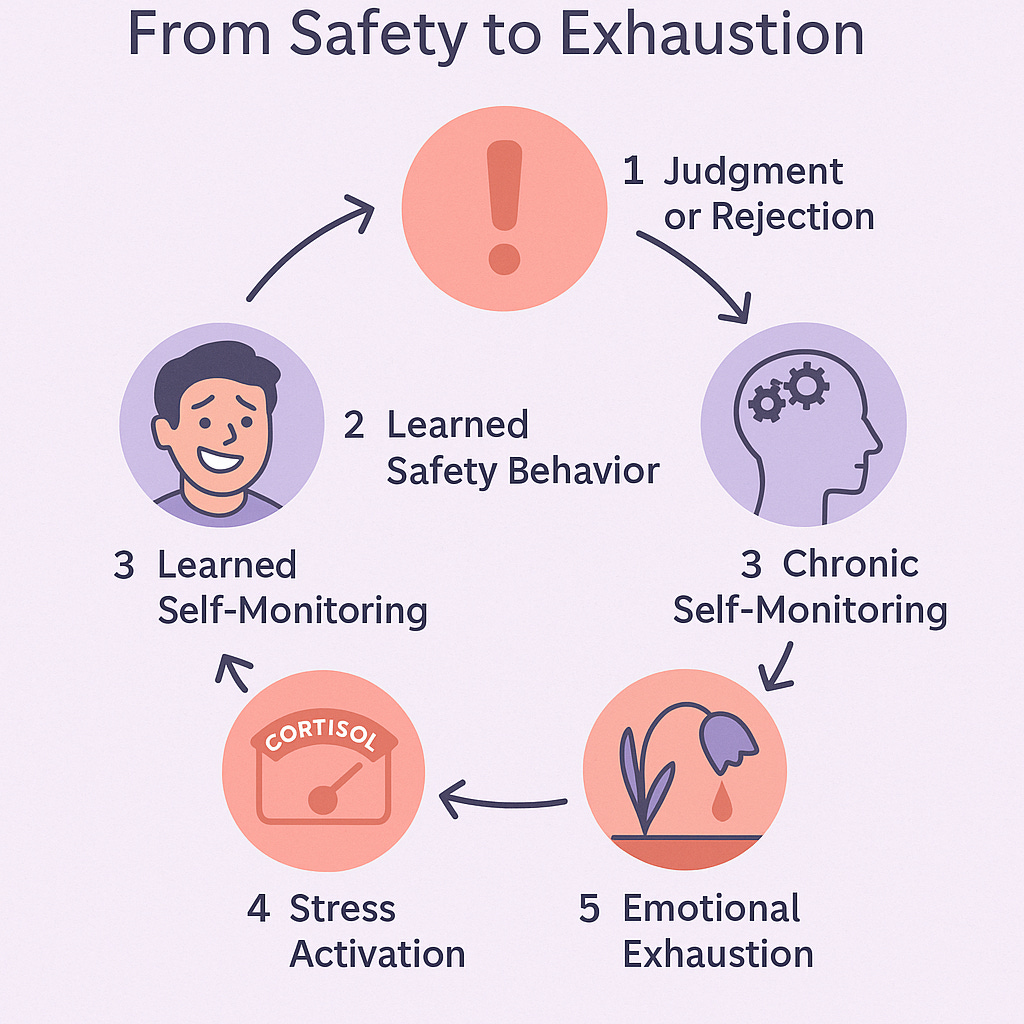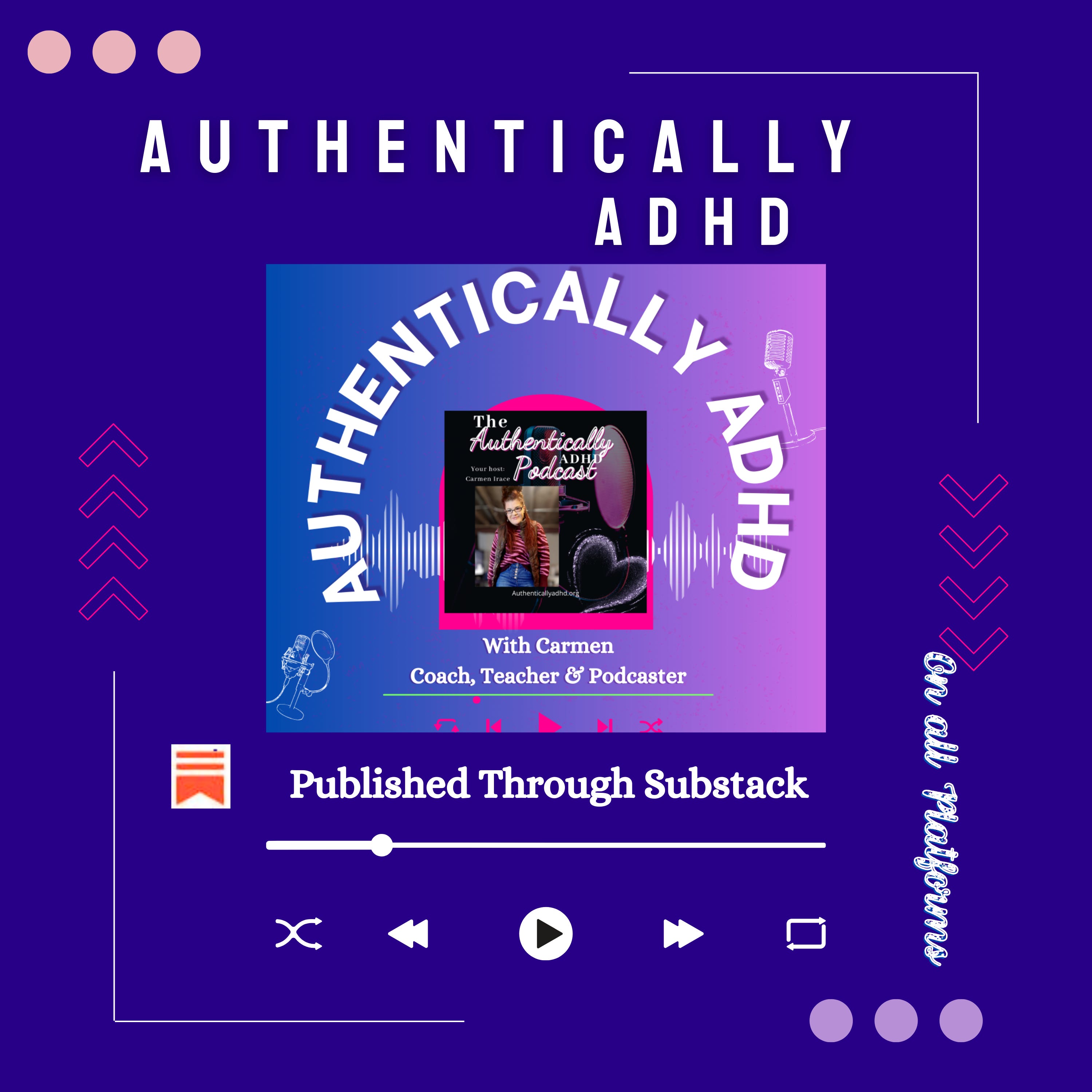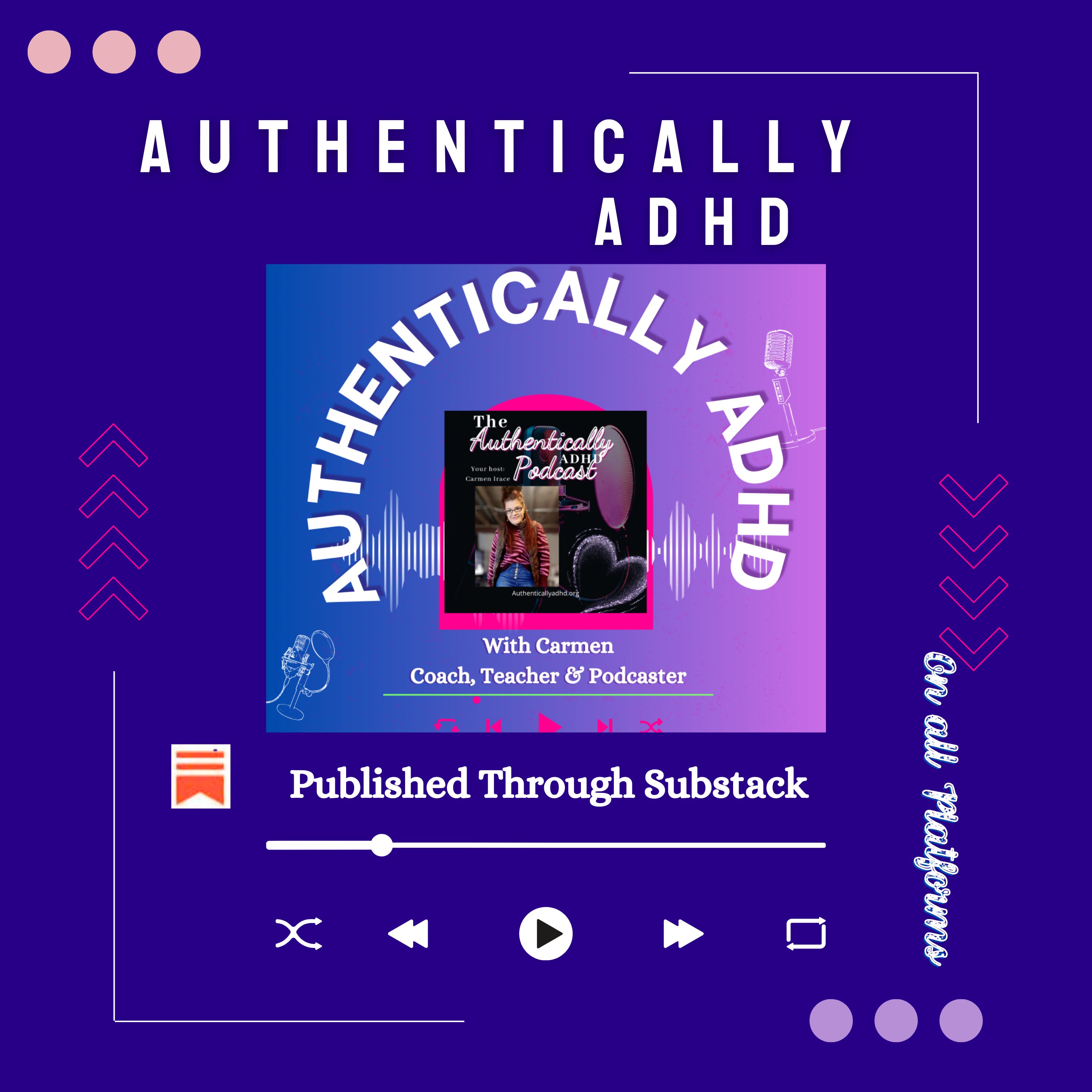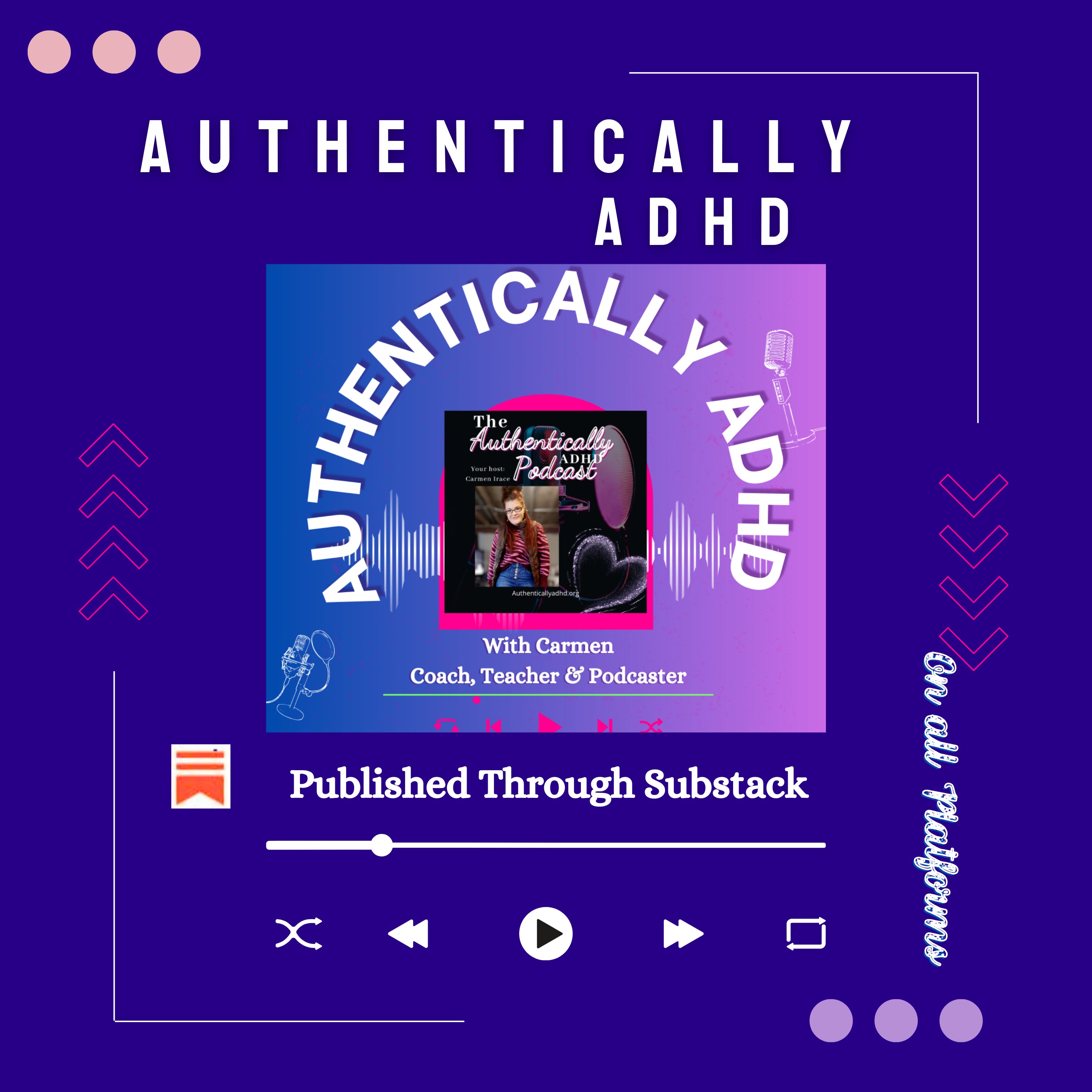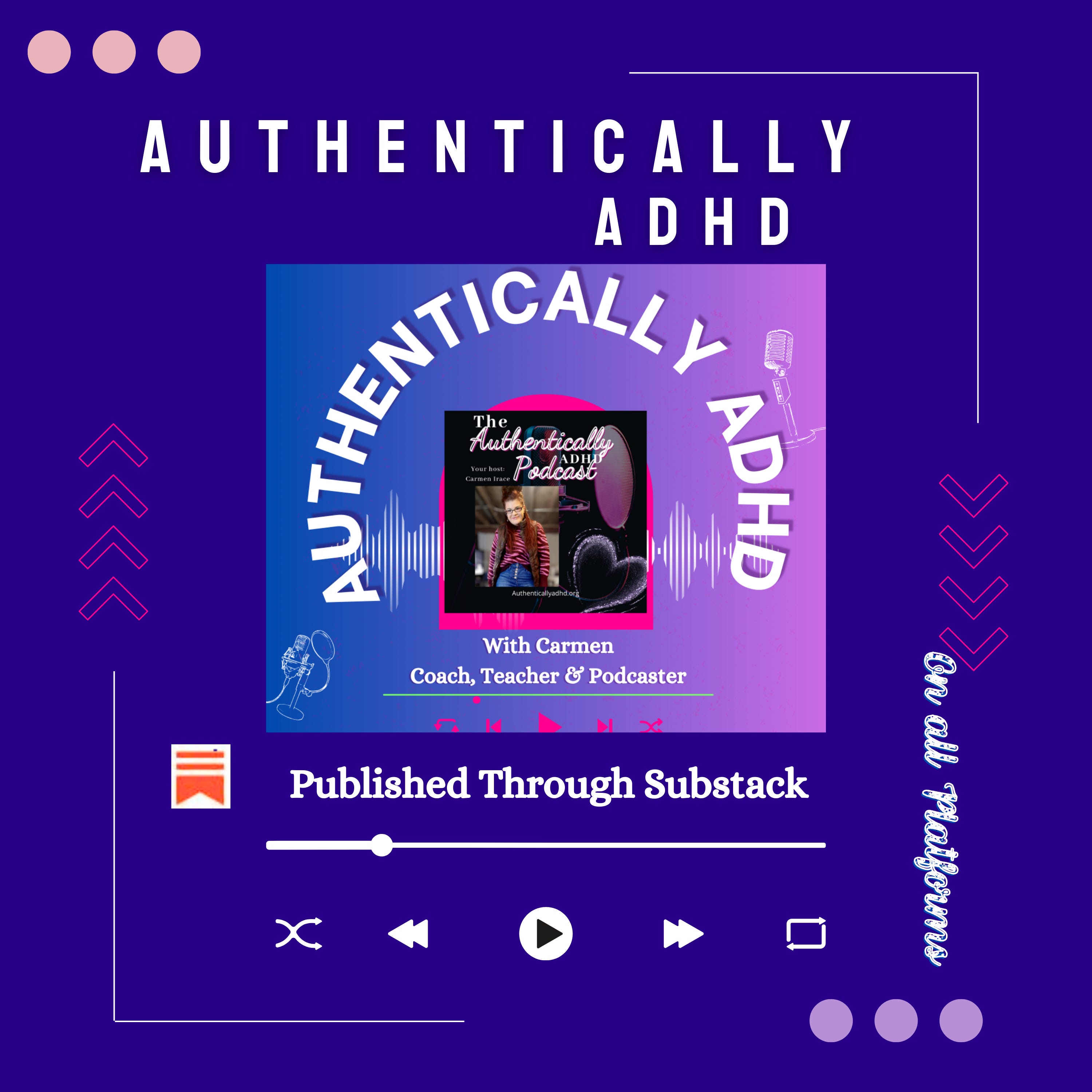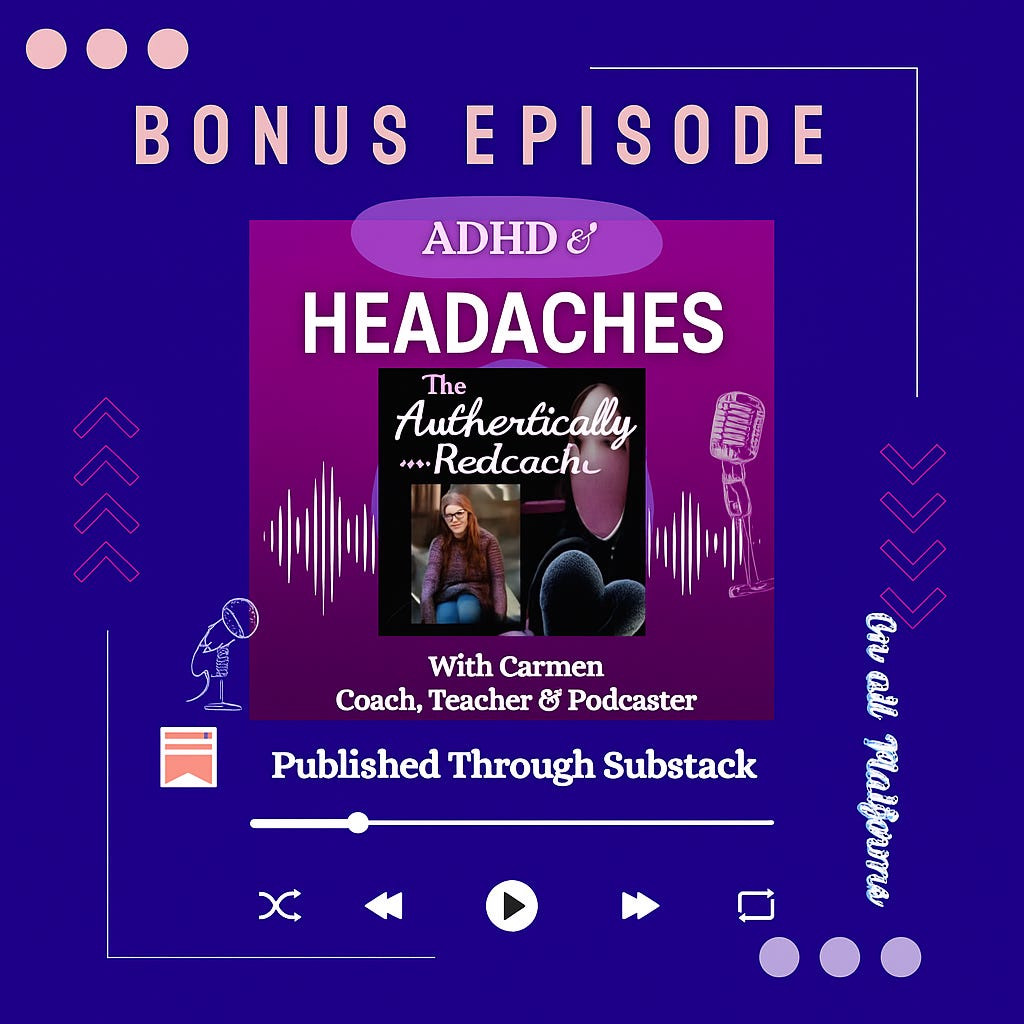Masking, Unmasking, and the Exhaustion in Between
Description
Introduction
Imagine trying to swim while holding a beach ball underwater – you might pull it off for a bit, but sooner or later that ball is bobbing to the surface. Masking ADHD can feel just like that. Many of us with ADHD learn early that our brains and behaviors can stand out, so we develop a “socially acceptable” persona to blend in. We smile, sit still, and force focus – all to hide our natural restlessness or distraction. This isn’t about being fake; it’s a survival strategy learned over years. But as the ADDA (Adult ADHD Organization) puts it, keeping that mask on “will take a lot of energy – and the same goes for hiding your ADHD symptoms” In this episode, we’ll explore what masking looks like, why we do it, how it varies across individuals, and most importantly, how to gradually unmask without burning out.
What Is Masking and Why We Do It
“Masking” (also called camouflaging or impression management) means hiding ADHD-related behaviors to appear neurotypical, usually to avoid stigma or negative judgments. Psychologists trace the idea back to Russell Barkley, who noted roughly one-third of people with ADHD develop masking habit. In practice, this can mean sitting unnaturally still to hide hyperactivity, speaking slowly to avoid interrupting, or painstakingly rehearsing what to say in social situations. We do it for safety. Maybe a teacher, boss, or parent once told us our energy was “too much,” or we saw peers get punished for fidgeting. Over time, we absorb: if we let our ADHD out, we risk judgment, rejection, or even losing out on opportunities. In fact, research shows it’s not paranoia: about 78% of adults with ADHD admit to concealing their symptoms at work for fear of discrimination In school, the disparity can be shocking – one study found students with overt ADHD behaviors are disciplined 3.5 times more often than their peers for the same actions. Add gender and cultural pressures, and masking can feel like the only path: for example, women with ADHD often face “double discrimination” (for having ADHD and for not fitting feminine organizational norms) and are 40% more likely than men to hide their diagnosis entirely. In short, from childhood on, many of us learn that showing our “whole” ADHD selves is risky or unwelcome. So we adapt. We smile when our mind is racing, offer practical reasons for missed details (“Sorry I’m late, traffic was a nightmare!”), and push down our impulsivity. This constant self-monitoring – judging every word, movement, or post you make – drains your brain like a marathon trainer. It literally spikes stress: one study found that simply drafting and editing an email to seem “normal” boosts cortisol by 45% – your body treats each message like a big performance reviewe. Over time, the nervous system can’t tell the difference between a social slip-up and physical dange, so we end up trapped in a cycle of hyper-alertness, exhaustion, and anxiety.
What Masking Looks Like
Because masking is so ingrained, it can look subtle – almost invisible – to others. Here are some common signs:
Forcing calmness: You feel restless or impulsive inside, but you keep your voice and movements unusually slow. Your leg might be itching to bounce, but you tuck it under the chair. (Essentially, you’re acting tranquil on the outside to hide your inside.).
Over-checking & perfectionism: You triple-check your work or double-back on a short text. It’s not just organization; it’s anxiety about making even a tiny mistake. You polish emails or assignments obsessively so no one will doubt you. This can buy you time socially, but it bleeds your time and energy.
Mimicking behavior: You silently copy others. If classmates fidget with a pencil or crack jokes, you nod and do something similar, even if it feels unnatural. You rehearse social scripts or small talk lines so you don’t stand out.
Hyper-focusing to overcompensate: You push intense focus on tasks that are being observed. In a meeting, you might go above and beyond on one project to cover for the times your attention drifts away.
Suppressing stims: You swallow small yelps when you’re excited, hold in hand-flapping urges, or quietly tap your foot under the table so nobody notices your need to move.
Masking emotions: Instead of expressing frustration or excitement, you “perform” a neutral or cheerfully appropriate response. You might bottle up anxiety during social events and then have a breakdown in private.
Over time, these “adaptations” literally become a second job. You’re constantly monitoring yourself: “Am I moving too much? Did I blurt out something weird? Should I rephrase that?” It can feel like juggling while walking a tightrope. Nothing about the self feels authentic anymore – you’re playing roles, not being you. But it’s understandable: many ADHDers grew up being rewarded for “good behavior” and punished for impulsivity. The very need to mask is born out of those early lessons.
The Spectrum of Masking Experiences
Masking isn’t one-size-fits-all; it varies depending on who you are, your ADHD type, and even where you live. For example, many women with ADHD describe “quiet masking”: an exhausting act of looking calm and organized while feeling chaos inside. Research suggests women often mask more intensely – making extra lists, rehearsing conversations, or overstating competence – which partly explains why ADHD in girls is underdiagnosed. One online clinician notes that 82% of women with ADHD report taking excessive notes or lists as a main coping strategy, whereas men more often throw themselves into high-powered work or sports to cover their restlessness. Men, on the other hand, often face a different mask: society may expect them to “just power through” or hide vulnerability. They might channel their energy into accomplishments or humor while resisting showing any confusion or need for help. Non-binary folks often juggle multiple sets of expectations, effectively running two exhausting personas simultaneously
Hormones also play a role: many women report that masking feels easier at certain times of the month and nearly impossible at others. Studies find that in the week before a period (when estrogen drops), it may take two to three times the energy to hold the mask than usual. In real numbers, one analysis suggests neurodivergent women spend about 4.2 hours each day on masking behaviors (mental checklists, micro-adjustments, etc.) compared to 2.7 hours for men – almost two extra hours of invisible labor.
Cultural and social context also shifts masking. If you live in a community that stigmatizes any difference, you may have learned to mask more completely. Queer or BIPOC individuals, for instance, often mask not just ADHD but intersectional identities – layering on extra caution. As a parent, you may have taught your child that only quiet, compliant behavior is “good,” so they never learned a louder style of coping. As an educator, you might see a child who seems well-behaved and think “no ADHD here,” while inside that child is using up all their energy to meet those external expectations. The takeaway: everybody’s mask looks a bit different. What matters is the cost: all masking demands surplus energy, and when you’re always paying that cost, the debt comes due.
The Exhaustion Cost
Speaking of cost – exhaustion is the hallmark of masking. It’s not ordinary tiredness; it’s an all-the-way-to-your-toes, bone-deep fatigue. Over time, masking takes an enormous toll on mental and physical health. Psychologists warn that chronic masking leads to “chronic stress, emotional exhaustion, and mental health struggles” like anxiety or depression. You might find yourself mentally blanking after social events, or breaking down over small setbacks. Rejection Sensitive Dysphoria (RSD) can worsen this: even a tiny hint of criticism triggers a panic that sends you scrambling to mask harder, which drains more energy.
Imagine the analogy of a running car engine: for you, masking means the engine is revving constantly, even when parked. That steady drain pushes cortisol and adrenaline through your system day after day. In fact, one study found cortisol (the stress hormone) climbs nearly 50% higher when an ADHD brain is in “masking mode,” treating every text or conversation like a high-stakes. No wonder so many ADHDers talk about being “tapped out” by nightfall.
The breakdown can look like burnout or even depression. Burnout may start targeted (you feel okay at home but depleted at work), whereas depression spreads gloom into all areas. The difference can blur when masking for years: you might not even recognize yourself under the layers of effort. Some call it an identity crisis – when the role you’ve played for so long crowds out who you actually are. Teachers and therapists note that people rapidly “unmasking” often feel lost at first, confused about what they truly feel versus what they’ve performed for so long.
Chronic masking even shows up in our bodies. It turns out that intense mental effort – like keeping a fake version of you running all day – activates the same inflammation pathways as physical traum. In other words, the stress of constant performance can undermine your immune system and heart health just like chronic physical stress. People who have masked intensely for years sometimes develop exhaustion-related illnesses in mid-life (autoimmunity, chronic pain, etc.) at higher rates. The data is sobering: extreme mental strain is linked with roughly a 23% higher risk of heart disease and 50% higher risk of Type 2 diabetes.
None of this means your experience is exaggerated or “all in your head” – it’s very real. Masking might start as a child’s coping trick, but it can become a hidden crisis of burnout and self-alienation. When we say “exhaustion in between,” we mean the haze between two states: who you pretend

